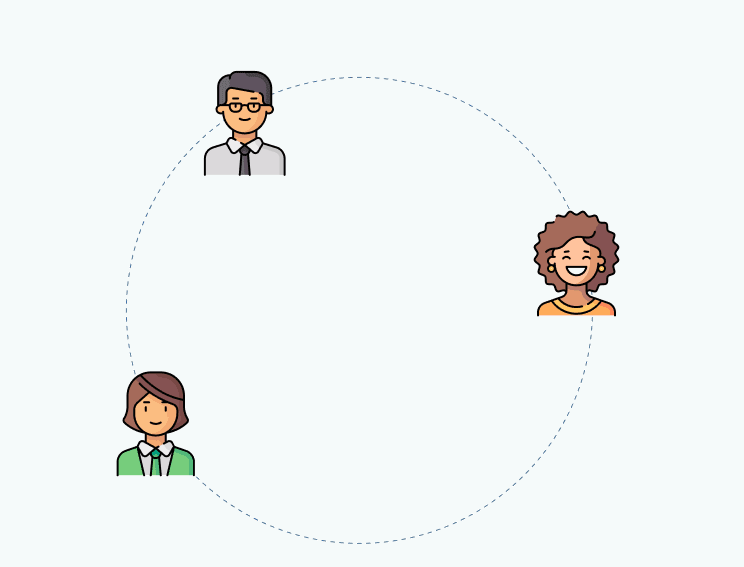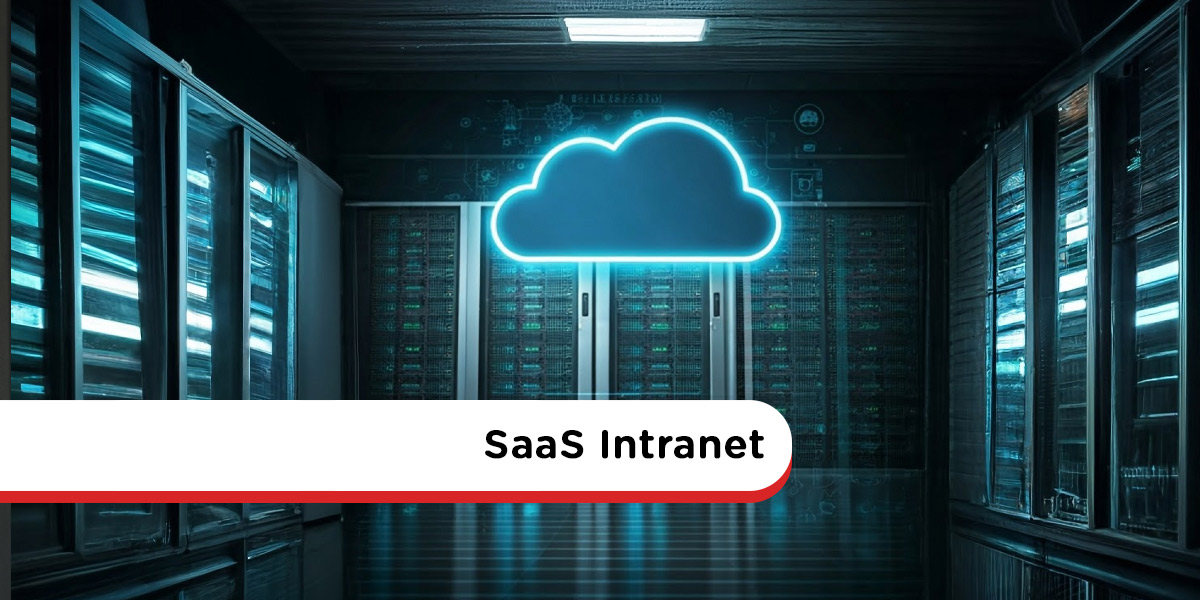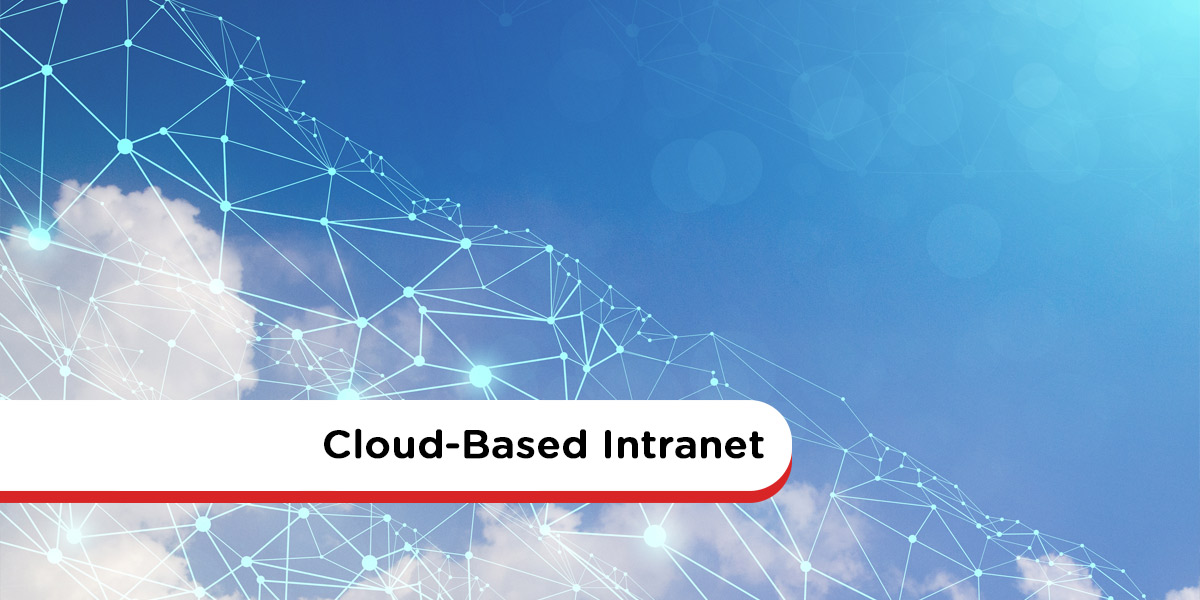
Your New Intranet Starts Here
Streamline communication, boost collaboration, and empower your team with MyHub's intuitive intranet solution.
Book a live demo now and experience the difference.
Take a Quick TourA SaaS intranet delivers all the benefits of a modern digital workplace without the responsibilities or hassles of on-premise software. Companies avoid costly infrastructure investment or complex software development. Maintenance and upgrades are handled by the provider, while you simply use a pay-as-you-go model to access the platform online. This drastically reduces the operational load on staff, freeing your organization to focus on mission-critical goals and strategic growth.
With such compelling advantages, it’s no surprise that more organizations are adopting SaaS intranet software. This flexible, cloud-based platform helps you achieve business objectives ranging from improved internal communications to efficient knowledge sharing and higher employee productivity.
What Is A SaaS Intranet?
SaaS stands for software as a service. A SaaS intranet is a cloud-based service that delivers intranet software over a secure internet connection. Instead of installing and maintaining software locally, third-party providers like MyHub supply, host, and update the entire platform.
However, that simple definition doesn’t capture the platform’s full potential. A SaaS intranet acts as a centralized hub that unites communication, teamwork, and knowledge-sharing tools under one virtual roof. Your internal network stays safe and secure while providing everything employees need to get work done from any location.
These intranets are easy to use and cost-effective. They’re perfect for businesses that want a scalable platform they can launch quickly with low upfront costs. Plus, anytime, anywhere access makes them ideal for remote teams and hybrid workplaces.
How Does SaaS Intranet Software Work?
A cloud intranet provider delivers the software as a subscription service. Users log in with their company accounts, and organizations pay a monthly or annual fee. Applications run entirely online, removing the need for local installations or dedicated servers.
All employees need is an internet connection to access the intranet on a desktop, laptop, or mobile device. Whether they’re in the office, at home, or on the go, staff can securely reach company data and essential tools anytime, anywhere.
Traditional setups required extra software purchases and complex add-ons. Today’s out-of-the-box intranet solutions come preloaded with the features businesses need. Plus, seamless integrations, from CRM platforms like Salesforce to HR systems, ensure smooth connections with the tools you already rely on.
What Are The Benefits Of SaaS Intranet Solutions?
A SaaS model suits companies of every size and industry, retail, finance, healthcare, education, and more. Here are the top five headline benefits:
- Easy Deployment: Rapid, out-of-the-box setup means you can launch quickly using pre-built templates and drag-and-drop tools. No need for software installations, license management, or on-premise servers.
- Scalability: SaaS intranets grow with your business. The provider handles infrastructure expansion so you can seamlessly accommodate more users, data, and processing power.
- Security: Data is stored securely in the cloud, with the provider responsible for advanced cybersecurity measures such as SSL encryption, access controls, and single sign-on authentication, reducing the risk of data breaches or loss.
- Automatic Updates & Maintenance: Software upgrades, backups, and routine maintenance are automatic, saving IT teams time and ensuring your intranet is always running the latest, feature-rich version.
- Enhanced Collaboration & Productivity: Integrated communication tools promote real-time collaboration and effortless information sharing, boosting employee engagement and overall productivity across the organization.
Key Features Of SaaS Intranets
What are the essential capabilities every top-performing SaaS intranet should provide? Below are the key features that belong on your must-have checklist when selecting a platform.
Ease of Use
A modern intranet must have an intuitive interface that employees can navigate without extensive training or technical know-how. The simpler the platform, the faster the adoption rate, ensuring staff dive in from day one.
A clean, user-friendly design keeps team members engaged and coming back regularly. SaaS intranet software streamlines the user experience, reducing IT support demands and outperforming traditional on-premise options.
Customization and Integration
Every organization is unique, so a leading intranet must allow deep customization to reflect your branding, culture, and workflows. Tailoring layouts, color schemes, and navigation improves the overall employee experience and fosters an inclusive company culture.
Seamless integration with existing business applications is equally critical. The best SaaS intranets connect with tools like Salesforce, BambooHR, project management platforms such as monday.com, plus Microsoft 365 and Google Workspace. Your intranet should serve as the gateway to your digital workplace, uniting all essential systems under one roof.
Mobile Accessibility
With a staggering 80% of the global workforce now deskless, mobile-first design is no longer optional. A powerful SaaS intranet ensures that remote workers and frontline staff enjoy the same seamless experience as office-based employees.
Look for a platform with a dedicated mobile app, enabling teams to stay connected and productive anywhere, whether on the shop floor, in the field, or working from home.
Security
Protecting sensitive company data is mission-critical. A robust SaaS intranet offers enterprise-grade data security, including multi-factor user authentication, advanced encryption, and granular access controls. These measures reduce the risk of breaches and safeguard confidential information.
Advanced Analytics
Built-in analytics give leaders valuable insight into how employees engage with content and features. By tracking popular pages, search terms, and engagement rates, you can make data-driven decisions to refine content strategy and continually improve the platform.
Smart Search
With vast amounts of files and resources stored on an intranet, an intelligent search function is essential. Look for advanced search capabilities with filters, tags, and categories, so users can instantly find the exact data or documents they need, boosting productivity across the organization.
Internal Communication And Collaboration
A standout intranet doubles as a powerful communication hub, connecting employees to information, resources, and each other. Essential features include instant messaging, news feeds, employee profiles, and organizational charts.
Cross-team collaboration flourishes with #channels, @mentions, push notifications, and embedded Microsoft or Google apps. Enhanced communication not only streamlines projects but also elevates employee engagement and the overall employee experience, a true win-win for the modern digital workplace.
Choosing the Right Intranet Software
Choosing the right SaaS intranet solution involves more than comparing costs. Follow this simple five-step process to identify the best platform for your organization.
Identify Your Needs
Understanding your company’s unique requirements is the first step. Priorities may include internal communications, knowledge management, or workflow optimization. Involve all stakeholders, from C-suite executives to remote and hybrid employees, to ensure every perspective is considered.
Decide On Features And Functionality
Once objectives are clear, focus on the features that will help achieve them. Choose an easy-to-navigate, user-friendly intranet that supports essential integrations, mobile access, and robust search capabilities.
Security is also critical. Confirm the platform includes encryption, multi-factor authentication, and a reliable data backup and recovery process. Research the provider’s track record for data privacy and security to avoid hidden risks.
Review Pricing And Support
Not all intranet providers are equal. Evaluate pricing models, monthly or annual subscriptions, and watch for hidden fees.
Look for a vendor that offers comprehensive support, including onboarding, training, and ongoing assistance, to help you maximize the platform’s benefits. Make sure the provider’s service level matches your organization’s expectations.
Implementation and Onboarding
Implementing a SaaS intranet should be a smooth process with minimal disruption. Confirm the level of migration support your provider offers, especially if you are transferring data from an older platform.
A well-designed SaaS intranet makes onboarding fast and intuitive. Most providers also supply training resources to ensure a seamless transition.
Best Practices For Adoption
Even with a feature-rich intranet, promoting user adoption is key. Apply these best practices to encourage engagement:
- Communicate the benefits of the new platform and gain employee buy-in.
- Offer training and support to ensure a smooth rollout.
- Gather user feedback through surveys and pulse checks.
- Use insights to continuously improve the platform and boost effectiveness.
Measuring ROI and Effectiveness
Demonstrating ROI and effectiveness ensures long-term success. Monitor these key areas:
User Adoption And Engagement
High employee engagement is the clearest indicator of value. Track metrics such as time on site, page views, click-throughs, and interaction levels (likes, comments) to measure impact.
Efficiency And Productivity Gains
As the intranet becomes the primary resource hub, expect measurable efficiency gains.
Monitor reduced search times, faster internal communication, and more streamlined project collaboration. Quantifying these improvements helps demonstrate the intranet’s contribution to overall business performance.
Cost Savings And Resource Allocation
A SaaS intranet can deliver significant cost savings by reducing physical infrastructure needs, lowering IT maintenance requirements, and minimizing licensing costs. Comparing these savings to subscription fees highlights the financial benefits.
SaaS Intranet: Main Takeaways
- SaaS intranet solutions provide a flexible, efficient way to enhance workplace collaboration and communication.
- Choosing the right platform and following best practices maximizes effectiveness and long-term success.
- Regularly reviewing success metrics ensures continuous improvement and alignment with business objectives.
About MyHub
Ready to get started? Sign up for a free demo or a 14-day trial of MyHub’s platform.
Designed by experts for non-experts, MyHub’s easy-to-use SaaS intranet solutions help organizations worldwide achieve their digital workplace goals.
FAQ Section
What is a SaaS intranet, and how does it differ from an on-premises intranet?
A SaaS intranet is delivered over the internet by a third-party provider; everything is hosted and maintained off-site. An on-premises intranet is installed and managed on company servers. The SaaS option typically lowers maintenance overhead, reduces upfront investment, and allows faster launches.
What are the main advantages of using a SaaS intranet?
Some of the chief advantages are: easy and quick deployment; scalability as your organization grows; automatic updates and maintenance; strong security baked into the service; access from anywhere (including mobile); and integration with tools you already use.
What should businesses consider before choosing a SaaS intranet provider?
Important factors include: determining what features you need (communication, search, analytics, mobile access, integrations, etc.), evaluating pricing (subscription model, hidden costs), confirming security and compliance standards (encryption, permissions, etc.), checking vendor support and service levels, and considering how easy onboarding and adoption will be for your team.




